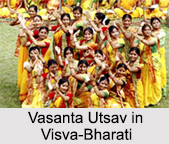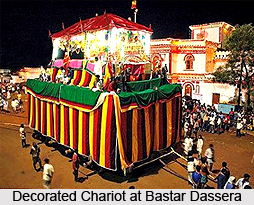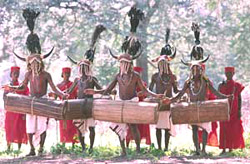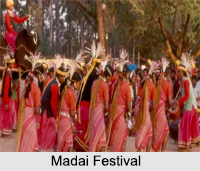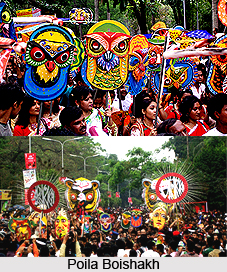 Indian Festivals are being celebrated in commemoration of some saints, gurus and prophets, the gods and goddesses or events celebrating their victories. Religious ceremonies, enthusiasm paralleled with ample fun and celebration marks the Indian festivals. There is a long list of the festivals celebrated in secular India like Diwali, Onam, Holi, Raksha Bandhan, Ram Navami, Maha Shivratri, and Janamashtami to name a few.
Indian Festivals are being celebrated in commemoration of some saints, gurus and prophets, the gods and goddesses or events celebrating their victories. Religious ceremonies, enthusiasm paralleled with ample fun and celebration marks the Indian festivals. There is a long list of the festivals celebrated in secular India like Diwali, Onam, Holi, Raksha Bandhan, Ram Navami, Maha Shivratri, and Janamashtami to name a few.
Different communities from different sects, following different religions In India celebrate the New Year according to the calendar they follow. New festivals also vary according to regions and harvests. Even some nationally celebrated festivals marks the New Year for some Indian communities. Reflecting the true essence of unity in diversity, below is a list of New Year festivals celebrated in India by different religion and communities.
Jude Sheetal
This festival marks Maithili New Year celebrated by the Maithilis in Bihar, Jharkhand and even Nepal. Maithili New Year is usually celebrated on the 14th of April according to the Gregorian calendar.
Bohag Bihu
Bohag Bihu, also known as Rangali Bihu or Bihu falls on the day of Baisakhi and Puthandu in Assam as it coincides with mid-April as per the Gregorian calendar. Bohaag Bihu is celebrated on the first day of the first month of the solar calendar known as Bohaag. The festival marks the Assamese New year in northeast India and other regions of the Indian subcontinent, East Asia and South-East Asia. Bihu is observed following the Hindu calendar and Buddhist calendar.
Gudi Padwa
Gudi Padwa is observed on the first day of Chaitra month and marks the New Year in Maharashtra. A `Gudi` is a beautiful arrangement of silk saree or cloth tied to stick with a `Lota` on the top and then decorated with sweets and garlands made of neem and mango. The day symbolizes the victory of Chatrapati Shivaji Maharaj over his enemies and Shalivahan"s victory over the Sakas.
Ugadi
Ugadi or Yugadi is the New Year celebration of Andhra Pradesh, Telangana and Karnataka. It is observed on the first day of the month of Chaitra in the Hindu calendar. Traditional sweets and `Pachadi,` made with raw mangoes and neem leaves are served with special Ugadi meal. The festival marks new beginnings so people buy new clothes and eat lots of good food with friends and family
Jamshedi Navroz
Jamshedi Navroz is the Iranian New Year, celebrated by people of the Parsi community in India and world. It is celebrated on the next day of Pateti, another new year"s of the Parsis.
Pateti
Also known as Nowruz, Pateti is mostly celebrated in Maharashtra and Gujarat, Pateti marks the beginning of new Iranian calendar. On this day, people are required to think about all the good and bad things that happened during the last year. They then reaffirm a promise to live their lives through the tenets of Zoroastrianism- right thoughts, right words, and right action.
Vishu
Vishu is celebrated as a Hindu new year in Kerala, tulu region in Karnataka and borders of Tamil Nadu. It is also called Bisu. The festival is observed on the first day of the Medam month of Malayalam Panchang. Vishu also marks the day of Mesha Sankranti or Mesha Sankraman during which the Sun transits to the first zodiac that is Mesha Rashi or Aries zodiac.
Baisakhi
Sikhs celebrate Baisakhi to mark the beginning of a new year. Baisakhi is the biggest harvest festival celebrated across entire North India. Commemorating the first day of the Vaisakh month, Baisakhi marks the Sikh New Year and commemorates formation of Khalsa Panth of warriors under Guru Gobind Singh in 1699.
Pohela Boishakh
West Bengal celebrated New Year as Pohela Boishakh. The festival is observed on the first day of the month of Vaisakh according to the Hindu calendar. It is popular as “Noboborsho†among Bengalis who observe it with new clothes, sweets, and cultural celebrations.
Muharram
Islamic New Year starts on the first day of Muharram, which is the first month of the lunar Hijri calendar. The day also marks the migration of Prophet Muhammad from Mecca to Medina in 622 AD, and the journey was called Hijrah or Hijri. The day is celebrated with sharing meals and prayers with the family.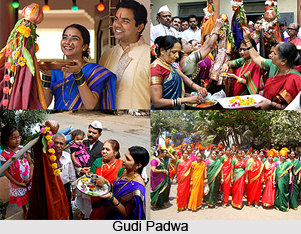
Cheti Chand
Sindhis celebrate the New Year as Cheti Chand or Jhulelal Jayanti or Dariyalal Jayanti. As per the Hindu calendar, Cheti Chand festival is celebrated on the first day of the month of Chaitra. Jhulelal is considered as an incarnation of Lord Varun, God of water. Sindhi Community celebrates the festival with rituals, fairs, and feasts.
Pana Sankranti
Pana Sankranti, also known as Maha Vishuba Sankranti is the traditional New Year festival of Hindus in Odisha. The festival is observed on the first day of the month of "Baisakh" according to the solar year. On this day the sun enters the sidereal Aries or Mesha Rashi. Pana Sankranti got its name from "Pana", the main drink specially prepared on this occasion.
Puthandu
Also known as Varusha Pirappu or the birth of New Year, Puthandu is observed on 13th or 14th April according to the Gregorian calendar. The festival marks Tamil New Year"s Day and it is celebrated in the Chithirai beginning, which is the first month as per the Tamil Calendar.
Bestu Varas
Bestu Varas is the Gujarati New Year also known as Varsha-Pratipada or Padwa. It is celebrated after Diwali to worship Lord Krishna and the Govardhan Hills. Bestu Varas is the first bright day of Kartik which is the first month as per the Indian Calendar based on Lunar Cycle. This day marks the beginning of their new fiscal year.
Losoong
Losoong or Sikkimese New Year is celebrated in the month of December. It marks the end of the harvesting season and the New Year for the people of Sikkim. Losoong is also known as "Sonam Losar" meaning the farmer"s New Year.
Navreh
Navreh marks the New Year celebrations of the Kashmiri Pandits. Navreh is derived from the Sanskrit word "Nava-Varsha", meaning New Year. The festival is observed by Brahmin community of Kashmiris on Chaitra Shukla Pratipada or the first day of the bright fortnight of the month of Chaitra.
Losar
Losar is the Tibetan New Year celebrated with huge fervor in Arunachal Pradesh. The festival that lasts for up to 15 days usually corresponds to a date in February or March in the Gregorian calendar. Religious activities form the main part of this festival.

